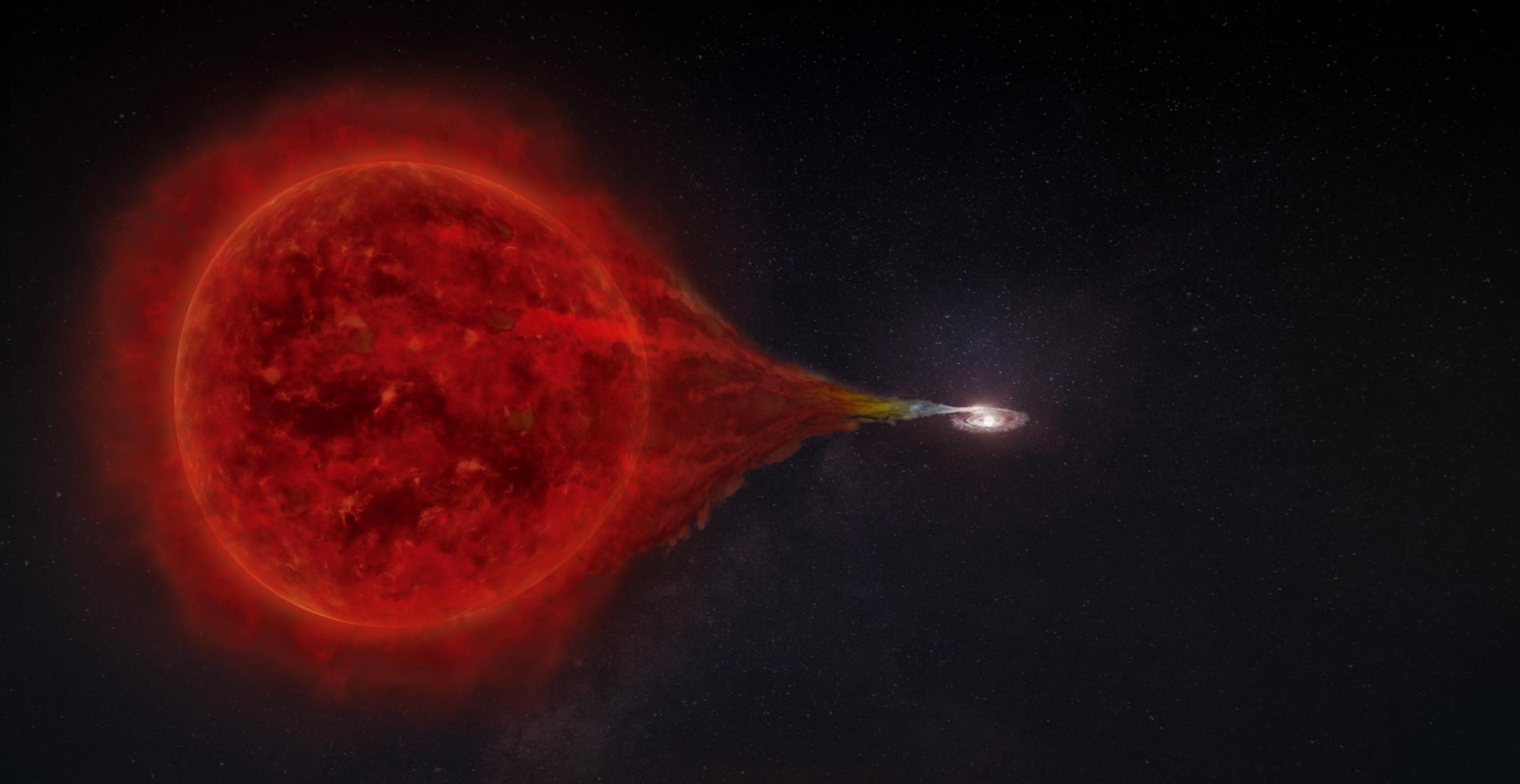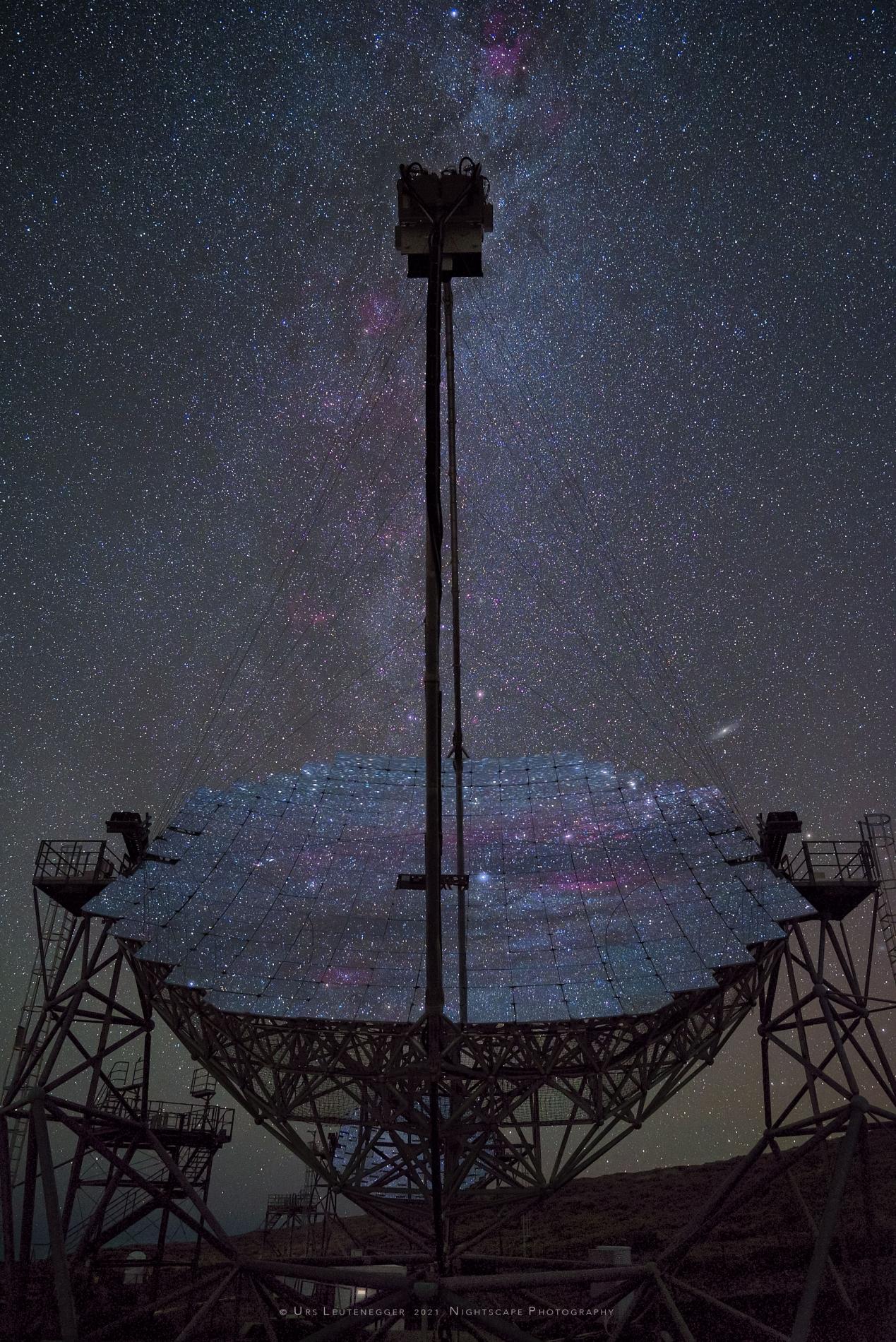MAGIC telescopes detect the explosion of a "vampire" star
The Institute of Astrophysics of Andalusia (IAA-CSIC) participates in the discovery of very high-energy gamma rays from a recurrent nova in the Milky Way. The result, published today in Nature Astronomy, identifies novae as a new type of very high-energy gamma-ray source
Novae are explosive stellar phenomena that occur in binary star systems in which one of the components is a white dwarf (the dense core of a solar-type star that has expelled its atmosphere). The white dwarf 'vampirises' material from its companion star, which accumulates and forms a surface layer of hydrogen; when it reaches a certain critical mass, it triggers an explosion that increases its brightness by thousands of times and ejects the outer layers at speeds of thousands of kilometres per second. After a while, the system stabilises and the process of matter accretion on the white dwarf resumes. This is the case for the recurrent nova RS Ophiuchi, whose latest explosion shows an unprecedented emission of very energetic gamma rays.
When the alert of the explosion of the nova RS Ophiuchi was received on 8 August 2021, an extensive monitoring system was activated. "The outburst of RS Oph is a very rare event in the gamma-ray sky: it is the most luminous and highest flux nova detected in gamma rays to date, and we observed it just in time", says Rubén López-Coto, researcher at the INFN (Padova) and the Institute of Astrophysics of Andalusia (IAA-CSIC), one of the lead authors of the paper.
A series of observations followed the detection, both from the ground and from space. On 9 August, the MAGIC collaboration used its twin cherenkov telescope system, located at the Roque de los Muchachos Observatory (La Palma), to observe the RS Ophiuchi nova.
Thanks to the excellent observing conditions on La Palma, the fast reaction of the collaboration and the high sensitivity of MAGIC, the nova could be detected at energies a hundred billion times higher than visible light. "This work has identified novae as a new type of very energetic gamma-ray source. It has therefore opened up a new line of research in very high-energy gamma-ray astronomy", adds Alicia López-Oramas, a researcher at the IAC and also one of the main authors of this work.

NOVAE, COSMIC PROTON ACCELERATORS
The research team was also able to verify that the explosion was energetic enough to produce strong shock waves in the medium surrounding the stellar system. These shock waves are responsible for accelerating subatomic particles in the interstellar medium to near-light speed.
In the case of the nova RS Ophiuchi 2021, the model that best describes the observations from MAGIC and other telescopes holds that the very high-energy gamma rays are produced by protons, the positively charged particles that make up the nuclei of hydrogen atoms. Although nova eruptions are less energetic than supernovae, in which a star dies in the explosion, they are also much more frequent. The results obtained by the MAGIC collaboration group and their colleagues indicate that, although most of the cosmic rays permeating the Milky Way are generated by other sources, novae can be surprisingly efficient proton accelerators.
"MAGIC has been unsuccessfully following novae explosions for some time now. It is gratifying to see that the effort is worthwhile and that we have managed to open new windows that bring a deeper understanding of our universe," says Oscar Blanch, researcher at the Institut de Física d'Altes Energies (IFAE) and spokesperson for the MAGIC collaboration. "It is the fruit of the work of many people," he concludes.
The Spanish community has been involved in MAGIC since its beginnings. The following are currently members of MAGIC: the Centro de Investigaciones Energéticas, Medioambientales y Tecnológicas (CIEMAT), the Institute of Astrophysics de Canarias (IAC), the Institut de Física d'Altes Energies (IFAE), the Universidad Autónoma de Barcelona (UAB), the Instituto de Ciencias del Cosmos de la Universidad de Barcelona (ICCUB), the Universidad Complutense de Madrid (UCM) and the Institute of Astrophysics of Andalusia (IAA-CSIC). The Institut d'Estudis Espacials de Catalunya (IEEC) participates in this project through researchers from the ICCUB and the Centre d'Estudis i Recerca Espacials (CERES-UAB) units. In addition, the MAGIC data centre is the Port d'Informació Científica (PIC), a collaboration between IFAE and CIEMAT.

J. Sitarek, R. López-Coto, D. Green, A. López-Oramas et al. "Gamma rays reveal proton acceleration in thermonuclear novae explosions". Nature Astronomy, April 2022
Instituto de Astrofísica de Andalucía (IAA-CSIC)
Unidad de Divulgación y Comunicación
Silbia López de Lacalle - sll[arroba]iaa.es - 958230676
https://www.iaa.csic.es
https://divulgacion.iaa.csic.es

